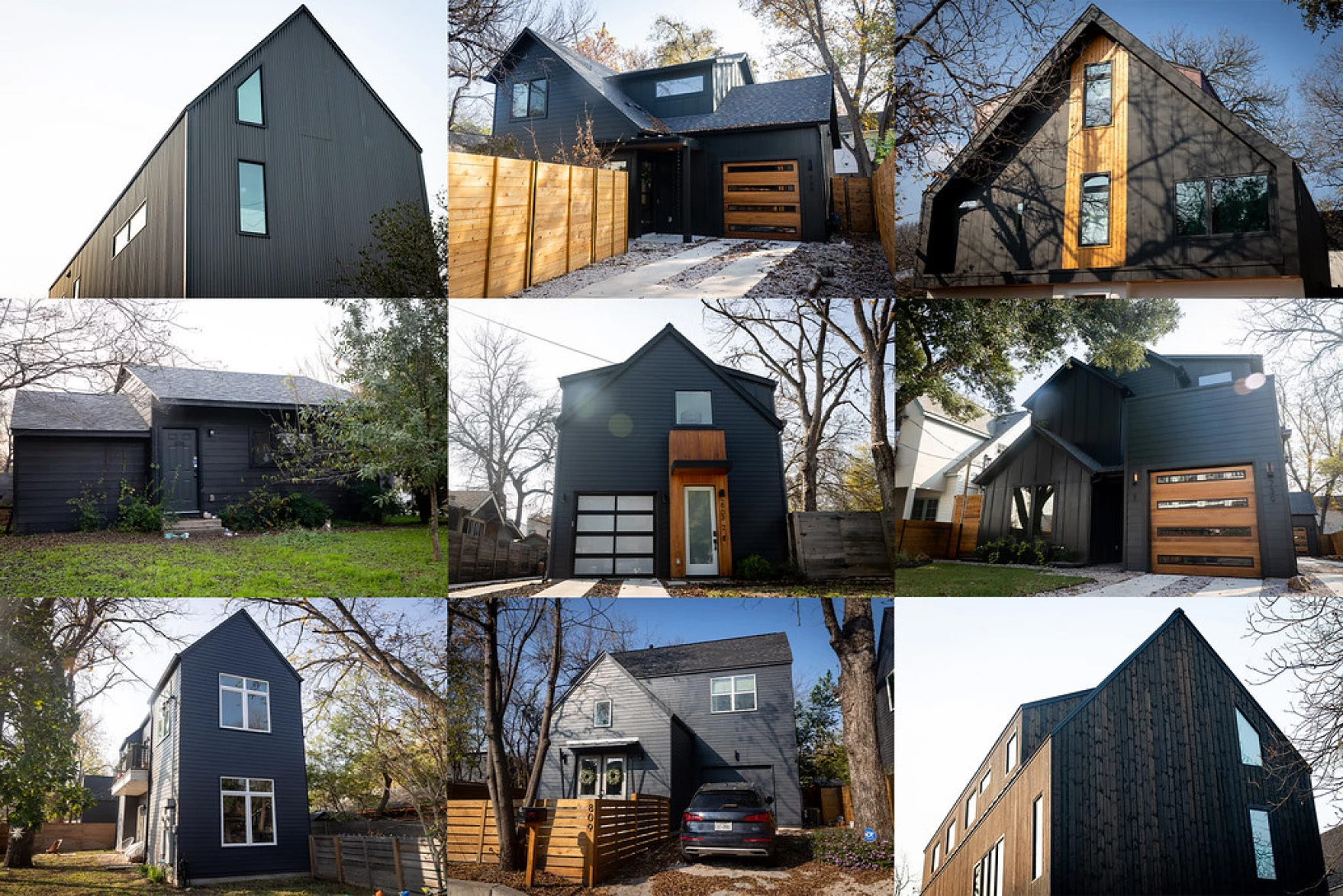From KUT:
Driving around the Govalle neighborhood in East Austin, it doesn’t take long for Forrest Maldonado to find one of those boxy, modern-looking homes. Older bungalows and ranch-style homes in this part of town are routinely demolished to make way for these new, multilevel quadrilateral cubes.
But he’s noticed another trend: A lot of these new homes are painted black.

Question asker Forrest Maldonado wondered whether dark-colored houses are less energy efficient.
Renee Dominguez / KUT
“I’m telling you, you throw a rock here, you hit a dark-toned house,” Maldonado said.
He wondered: Is it really a good idea to have a dark-colored house in a place with summers as brutal as Texas? In other words, is a black house less energy efficient than a lighter-colored house?
“We all learn this in, like, elementary school: Black absorbs heat, white reflects heat, right?” he said.
I remember this, too. But I figured maybe we should double-check with an actual scientist.
Solar science lesson
When it comes to color, the thing you need to think about is not the temperature of the air, but the energy carried by light.
“Sunlight is comprised of essentially white light. It’s got all different colors of light in it,” Sean Roberts, an associate professor of chemistry at UT Austin, said. “Sunlight contains energy.”
That energy can heat things up — things like the walls of a house.
When you see a blue house, for example, you’re seeing the parts of the light that are reflecting off the house. The paint is absorbing all the other colors except blue — the blue light is bouncing off and into your eyeballs. Not only is the house absorbing all the other colors from the sunlight, but also the energy from that light.
“But when you see something that’s black, it’s absorbing everything, right? It’s absorbing all the visible light that you can see,” Roberts said.
So, it’s absorbing a lot more energy.
(Infrared light — which is not visible to the human eye — also plays a big part in sunlight heating up a surface, but we’ll leave that alone for the moment.)
I wanted to check this out in the real world. There’s a house in my neighborhood that has one big east-facing wall — the bottom part is white, the top part is black, so I grabbed a laser thermometer and waited for a sunny day. It was about 75 degrees outside, and the sun was shining directly on the wall.
I measured the white part: 82.7 degrees.
Now, the black part (just a few feet up): 101 degrees.













